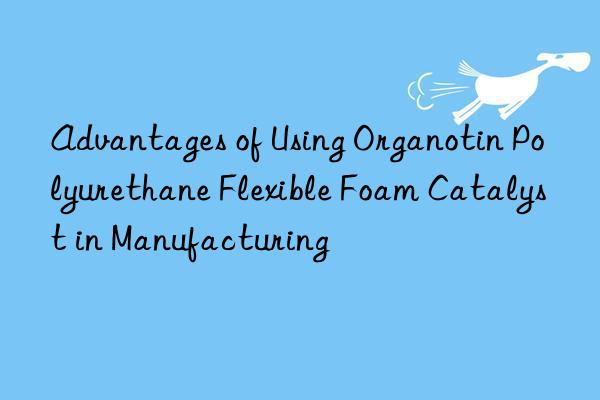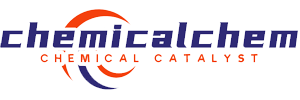
Advantages of Using Organotin Polyurethane Flexible Foam Catalyst in Manufacturing
Introduction
Polyurethane (PU) flexible foam is a versatile and widely used material in various industries, including automotive, furniture, bedding, packaging, and construction. The performance and properties of PU flexible foam are significantly influenced by the catalysts used during its manufacturing process. Among the many catalysts available, organotin compounds have emerged as one of the most effective and popular choices for enhancing the curing and foaming processes of PU flexible foam. This article delves into the advantages of using organotin polyurethane flexible foam catalysts, exploring their benefits, applications, and the science behind their effectiveness.
What Are Organotin Catalysts?
Organotin compounds are a class of organic tin-based chemicals that have been used in various industrial applications for decades. In the context of polyurethane manufacturing, organotin catalysts play a crucial role in accelerating the reaction between isocyanates and polyols, which are the two primary components of PU foam. These catalysts help to control the rate of the reaction, ensuring that the foam forms with the desired properties, such as density, hardness, and resilience.
Types of Organotin Catalysts
There are several types of organotin catalysts commonly used in PU foam production:
-
Dibutyltin Dilaurate (DBTDL): One of the most widely used organotin catalysts, DBTDL is known for its excellent catalytic efficiency and low toxicity. It is particularly effective in promoting the urethane reaction, which is essential for the formation of strong and durable foam structures.
-
Stannous Octoate (SnOct): This catalyst is often used in combination with DBTDL to balance the reaction rates and improve the overall performance of the foam. SnOct is particularly useful in controlling the gel time and reducing the tendency of the foam to collapse during curing.
-
Tributyltin Acetate (TBTA): TBTA is a more potent catalyst than DBTDL and is typically used in specialized applications where faster curing times are required. However, it is less commonly used due to its higher cost and potential environmental concerns.
-
Dibutyltin Diacetate (DBTDA): This catalyst is similar to DBTDL but has a slightly different reactivity profile. It is often used in formulations where a slower gel time is desired, making it ideal for producing thicker or more complex foam structures.
Product Parameters
| Parameter | Value |
|---|---|
| Chemical Name | Dibutyltin Dilaurate (DBTDL) |
| CAS Number | 77-58-7 |
| Molecular Weight | 536.9 g/mol |
| Appearance | Pale yellow to amber liquid |
| Density | 1.08 g/cm³ at 25°C |
| Viscosity | 100-150 cP at 25°C |
| Solubility | Soluble in organic solvents |
| Flash Point | >100°C |
| Boiling Point | Decomposes before boiling |
| Shelf Life | 12 months in sealed container |
| Storage Conditions | Cool, dry, and well-ventilated |
Why Choose Organotin Catalysts?
The choice of catalyst in PU foam manufacturing can have a significant impact on the final product’s quality, performance, and cost. Organotin catalysts offer several key advantages that make them an attractive option for manufacturers:
1. Enhanced Reaction Efficiency
One of the most significant advantages of organotin catalysts is their ability to accelerate the reaction between isocyanates and polyols. This results in faster curing times, which can increase production throughput and reduce manufacturing costs. In addition, the controlled reaction rate ensures that the foam forms uniformly, leading to better physical properties and fewer defects.
Example: Faster Curing Times
Imagine you’re baking a cake. If you use a weak leavening agent, your cake might take forever to rise, and by the time it does, it could be overcooked or uneven. On the other hand, if you use a powerful leavening agent, your cake will rise quickly and evenly, resulting in a perfect, fluffy texture. Organotin catalysts work similarly in PU foam production, ensuring that the foam rises (or "cures") at just the right speed for optimal performance.
2. Improved Foam Properties
The use of organotin catalysts can lead to improved foam properties, such as increased resilience, better tensile strength, and enhanced tear resistance. These properties are critical for applications where the foam needs to withstand repeated compression or stress, such as in seating, mattresses, and automotive interiors.
Example: Resilience in Furniture Cushions
Think about sitting on a couch cushion. You want the cushion to bounce back to its original shape after you stand up, right? That’s what we call resilience. Organotin catalysts help ensure that the foam in your cushion remains resilient, so you don’t end up with a flat, uncomfortable seat after a few uses.
3. Reduced Environmental Impact
While some organotin compounds have raised environmental concerns in the past, modern formulations have been optimized to minimize their ecological footprint. For example, DBTDL is considered to be relatively non-toxic and has a lower environmental impact compared to other organotin catalysts like TBTA. Additionally, the use of organotin catalysts can reduce the need for excessive amounts of other chemicals, such as blowing agents, which can have a more significant environmental impact.
Example: Green Chemistry
In the world of chemistry, "green" means finding ways to produce materials with minimal harm to the environment. Organotin catalysts, when used responsibly, can contribute to greener manufacturing processes by reducing waste and lowering the overall environmental impact of PU foam production.
4. Cost-Effectiveness
Organotin catalysts are generally more cost-effective than alternative catalysts, such as amine-based catalysts, because they require smaller amounts to achieve the same level of performance. This can result in significant cost savings for manufacturers, especially in large-scale production environments.
Example: Penny-Wise, Pound-Foolish
Using a cheaper catalyst might seem like a good idea at first, but if it requires twice as much to get the job done, you’re not really saving money. Organotin catalysts are like the Goldilocks of catalysts—just the right amount for the best results without breaking the bank.
5. Versatility in Applications
Organotin catalysts are highly versatile and can be used in a wide range of PU foam applications, from soft, flexible foams for bedding and upholstery to rigid foams for insulation and construction. Their ability to fine-tune the reaction rate and foam properties makes them suitable for both high-performance and cost-sensitive applications.
Example: From Couches to Cars
Whether you’re making a comfy couch cushion or a durable car seat, organotin catalysts can help you achieve the perfect foam for the job. They’re like the Swiss Army knife of catalysts—useful in almost any situation!
How Organotin Catalysts Work
To understand why organotin catalysts are so effective, it’s important to look at the chemistry behind their action. In PU foam production, the main reactions involve the interaction between isocyanates (R-N=C=O) and polyols (R-OH). These reactions can be broadly categorized into two types:
-
Urethane Reaction: This is the primary reaction responsible for forming the polymer chains that give PU foam its structure. The reaction occurs when an isocyanate group reacts with a hydroxyl group from the polyol, forming a urethane linkage (R-NH-CO-O-R).
-
Blowing Reaction: This reaction involves the decomposition of water or a blowing agent (such as CO₂) to form gas bubbles within the foam. These bubbles expand the foam and give it its characteristic cellular structure.
Organotin catalysts work by facilitating both the urethane and blowing reactions. They do this by acting as Lewis acids, which means they can donate electron pairs to the isocyanate group, making it more reactive. This accelerates the urethane reaction, allowing the foam to cure more quickly and uniformly. At the same time, organotin catalysts can also promote the blowing reaction by catalyzing the decomposition of water or other blowing agents, ensuring that the foam expands properly.
Reaction Mechanism
The mechanism of organotin catalysis in PU foam production can be summarized as follows:
-
Activation of Isocyanate: The organotin compound donates an electron pair to the isocyanate group, increasing its reactivity and making it more likely to react with the polyol.
-
Formation of Urethane Linkage: The activated isocyanate group reacts with the hydroxyl group from the polyol, forming a urethane linkage and releasing a molecule of water or a blowing agent.
-
Blowing Agent Decomposition: The water or blowing agent decomposes into gas (usually CO₂), which forms bubbles within the foam. These bubbles expand the foam and give it its cellular structure.
-
Curing and Crosslinking: As the foam continues to cure, additional urethane linkages form, creating a network of polymer chains that give the foam its final structure and properties.
Comparison with Other Catalysts
While organotin catalysts are highly effective, they are not the only option available for PU foam production. Amine-based catalysts, for example, are also commonly used and have their own set of advantages and disadvantages. Let’s compare the two:
| Parameter | Organotin Catalysts | Amine-Based Catalysts |
|---|---|---|
| Reaction Rate | Fast and controllable | Very fast, but difficult to control |
| Foam Properties | Improved resilience, strength | Tends to produce softer foams |
| Environmental Impact | Lower impact (especially DBTDL) | Higher impact (some amines are volatile) |
| Cost | More cost-effective | Can be more expensive |
| Versatility | Suitable for a wide range of applications | Limited to specific applications |
As you can see, organotin catalysts offer a better balance of performance, cost, and environmental impact, making them a superior choice for most PU foam manufacturing processes.
Applications of Organotin Catalysts in PU Foam Manufacturing
The versatility of organotin catalysts makes them suitable for a wide range of applications in the PU foam industry. Here are some of the most common uses:
1. Furniture and Bedding
PU foam is a popular choice for cushions, mattresses, and pillows due to its comfort, durability, and affordability. Organotin catalysts help ensure that the foam has the right balance of softness and support, making it ideal for these applications. For example, in mattress production, organotin catalysts can be used to create foam with excellent resilience, ensuring that the mattress retains its shape and provides consistent support over time.
2. Automotive Interiors
PU foam is widely used in automotive interiors for seats, headrests, and door panels. In these applications, the foam must be able to withstand repeated compression and exposure to heat, cold, and UV light. Organotin catalysts help produce foam with superior tensile strength and tear resistance, making it more durable and long-lasting. Additionally, the controlled reaction rate provided by organotin catalysts ensures that the foam cures evenly, reducing the risk of defects or inconsistencies.
3. Packaging
PU foam is also used in packaging applications, where it provides cushioning and protection for delicate items during shipping. In this case, organotin catalysts can be used to produce foam with a lower density, making it lighter and more cost-effective while still providing adequate protection. The ability to fine-tune the foam’s properties allows manufacturers to create custom solutions for different packaging needs.
4. Construction and Insulation
PU foam is increasingly being used in construction and insulation applications due to its excellent thermal and acoustic properties. Organotin catalysts can be used to produce rigid foam boards or spray-applied foam insulation, which provide superior insulation performance while being easy to install. The use of organotin catalysts in these applications ensures that the foam cures quickly and uniformly, reducing installation time and labor costs.
Challenges and Considerations
While organotin catalysts offer many advantages, there are also some challenges and considerations that manufacturers should be aware of:
1. Toxicity and Environmental Concerns
Although modern organotin catalysts, such as DBTDL, are considered to have a lower environmental impact compared to older formulations, there are still concerns about their potential toxicity. Some organotin compounds, such as TBTA, have been linked to environmental contamination and health risks. Therefore, it’s important for manufacturers to choose catalysts carefully and follow best practices for handling and disposal.
2. Compatibility with Other Ingredients
Organotin catalysts can sometimes interact with other ingredients in the PU foam formulation, such as surfactants, blowing agents, and flame retardants. These interactions can affect the foam’s properties or cause processing issues. To avoid these problems, manufacturers should conduct thorough testing and optimization of their formulations to ensure compatibility.
3. Storage and Handling
Organotin catalysts are sensitive to moisture and air, which can cause them to degrade over time. Proper storage conditions, such as keeping the catalysts in sealed containers and storing them in cool, dry environments, are essential to maintain their effectiveness. Additionally, manufacturers should handle organotin catalysts with care, wearing appropriate personal protective equipment (PPE) to avoid skin contact or inhalation.
Conclusion
In conclusion, organotin catalysts offer numerous advantages for PU foam manufacturing, including enhanced reaction efficiency, improved foam properties, reduced environmental impact, cost-effectiveness, and versatility in applications. By understanding the science behind these catalysts and addressing the associated challenges, manufacturers can produce high-quality PU foam products that meet the demands of various industries. Whether you’re making a comfortable couch cushion or a durable car seat, organotin catalysts can help you achieve the perfect foam for the job.
References
- Kirk-Othmer Encyclopedia of Chemical Technology, 5th Edition, Volume 19, John Wiley & Sons, Inc., 2005.
- Polyurethane Handbook, 2nd Edition, G. Oertel, Hanser Gardner Publications, 1993.
- Handbook of Polyurethanes, 2nd Edition, G. Woods, CRC Press, 2001.
- Catalysis in Polymer Science, M. H. Cohen, Academic Press, 1982.
- Organotin Compounds in Industry and Environment, J. R. Kramer, Royal Society of Chemistry, 1998.
- Polyurethane Foams: Science and Technology, A. C. Shaw, Woodhead Publishing, 2012.
- Green Chemistry and Catalysis in Polyurethane Production, P. T. Anastas, American Chemical Society, 2009.
- Safety and Health in the Use of Organotin Compounds, World Health Organization, 1996.
- Polyurethane Chemistry and Technology, I. C. Ward, Plastics Design Library, 2004.
- The Role of Catalysts in Polyurethane Foam Processing, R. S. Faragher, Journal of Cellular Plastics, 1998.
Extended reading:https://www.newtopchem.com/archives/44916
Extended reading:https://www.bdmaee.net/quick-drying-tin-tributyltin-oxide-hardening-catalyst/
Extended reading:https://www.newtopchem.com/archives/642
Extended reading:https://www.bdmaee.net/cas-683-18-1/
Extended reading:https://www.bdmaee.net/dabco-ne1060-catalyst-cas10046-12-1-evonik-germany/
Extended reading:https://www.cyclohexylamine.net/low-atomization-catalyst-low-atomization-catalyst-9727/
Extended reading:https://www.bdmaee.net/dabco-mb20-bismuth-metal-carboxylate-catalyst-catalyst-dabco-mb20/
Extended reading:https://www.bdmaee.net/nnnnn-pentamethyldiethylenetriamine/
Extended reading:https://www.bdmaee.net/wp-content/uploads/2022/08/35-1.jpg
Extended reading:https://www.bdmaee.net/pc-cat-t9-catalyst-nitro/

 微信扫一扫打赏
微信扫一扫打赏

